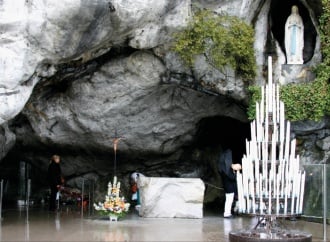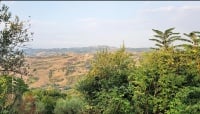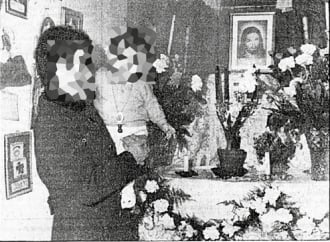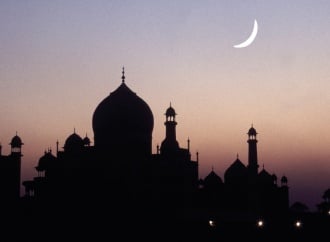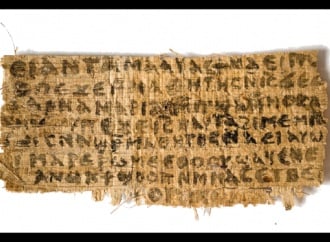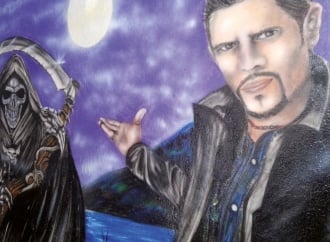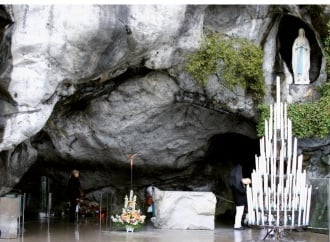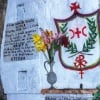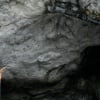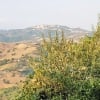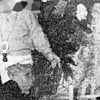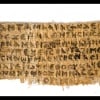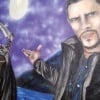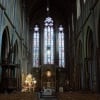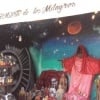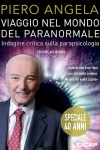The faithful are seeking miracles and finding them -- they believe -- in unlikely forms and places. These include apparitions of the Virgin Mary (in the Bosnian village of Medjugorje, beginning in 1981), bleeding statues and crucifixes (Quebec, 1985), and the portrait of Mary seen in a splotch on a tree (Los Angeles, 1992). Now there are reported healings and other "miraculous" phenomena attending a teenage girl who exists in a near-coma state in Worcester.
Pilgrims currently stream to the home of Audrey Santo who has been bedridden since a 1987 near-drowning left her in an open-eyed but unresponsive state. Visitors to the home chapel, converted from a garage, report healings after being shown statues that drip oil and communion wafers that bear smears of blood.
Skeptics may not be guilty of excessive doubt when they wonder how and why a tragic figure who cannot heal herself is able to heal others. And tests of the oil only add to the skepticism. Although the Santo family report it as mysterious and unidentifiable, analysis of one sample by a Pittsburgh laboratory revealed it to be 80 percent vegetable oil and 20 percent chicken fat.
While many -- but not all -- miracle reports are Catholic, the Church is often skeptical of such extra-canonical phenomena. It has distanced itself from Medjugorje (where six children supposedly conversed with the Virgin Mary), and the local bishop proclaimed the affair a fraud. Similarly a clerical commission that investigated a weeping and perambulating statue in Thorton, California, in 1981 attributed the phenomena to probable hoaxing.
In fact, in the 14th chapter of Daniel (in Catholic bibles) is the story of an animated idol of Baal. King Cyrus believed that the idol's consumption of food and drink placed before it daily was proof of its genuineness. Daniel, however, explained that the idol was only clay and brass "and it never ate or drank anything."
Cyrus arranged a test in which the temple was sealed after the food was placed, but Daniel had the floor covered with ashes. Morning came and, while the food was gone, footsteps in the ashes led to hidden doors used by the priests and their families.
This story is an effective prohibition against animated icons and other effigies, which cross a theological line into idolatry -- that is, worship of an image as if it were the real model rather than merely a symbol.
Appropriately, the news media have exposed many claims. For example, newsmen from the Canadian Broadcasting Corporation were able to borrow one of the Quebec effigies and to have it scientifically analyzed. The blood had been mixed with pork fat so that, when the room warmed from pilgrims' body heat, the mixture would liquefy and run like tears. A more innocent explanation was afforded the tree-splotch "Virgin" in Los Angeles: A tree expert determined a fungus was responsible.
There seems, however, little incentive for Church prelates to adopt a critical stance. The clerics who investigated the perambulating statue in California, for example, were denounced for their efforts by many religious believers who called them "a bunch of devils."
In the Santo case, the Worcester bishop has appointed a theologian and two psychologists to investigate, but in light of the past perhaps a team of magicians and scientists would seem more appropriate.
Although we live in a scientific age, there has been a resurgence in magical thinking, resulting in a revival of religious fundamentalism, the rise of the "New Age" movement, and an increase in "miracle" claims. The appeal is widespread, although it may be especially strong among the economically disadvantaged, where human despair and superstition may coexist. (The Santo phenomena, for example, took place in the midst of Portuguese immigrant families.)
People seem to hunger for some tangible religious experience, and wherever there is such profound want there is the opportunity for what skeptics call "pious fraud." Money is rarely the primary motive, the usual impetus being to renew the faith of believers and confound the doubters. An end-justifies-the- means attitude may prevail, but the genuinely religious and the devoutly skeptical may agree on one thing, that the truth must serve as both the means and the end. Ultimately, neither science nor religion can be served by a deceptive approach.
__________
Joe Nickell, Ph.D., is Senior Research Fellow of the international Committee for the Scientific Investigation of Claims of the Paranormal (CSICOP) and author or editor of sixteen investigative books on investigation including Looking for a Miracle (Prometheus Books).


